Becoming a masterpiece
"He is the one who holds the paintbrush as we become his masterpiece" and a creative project that embraces process over product.
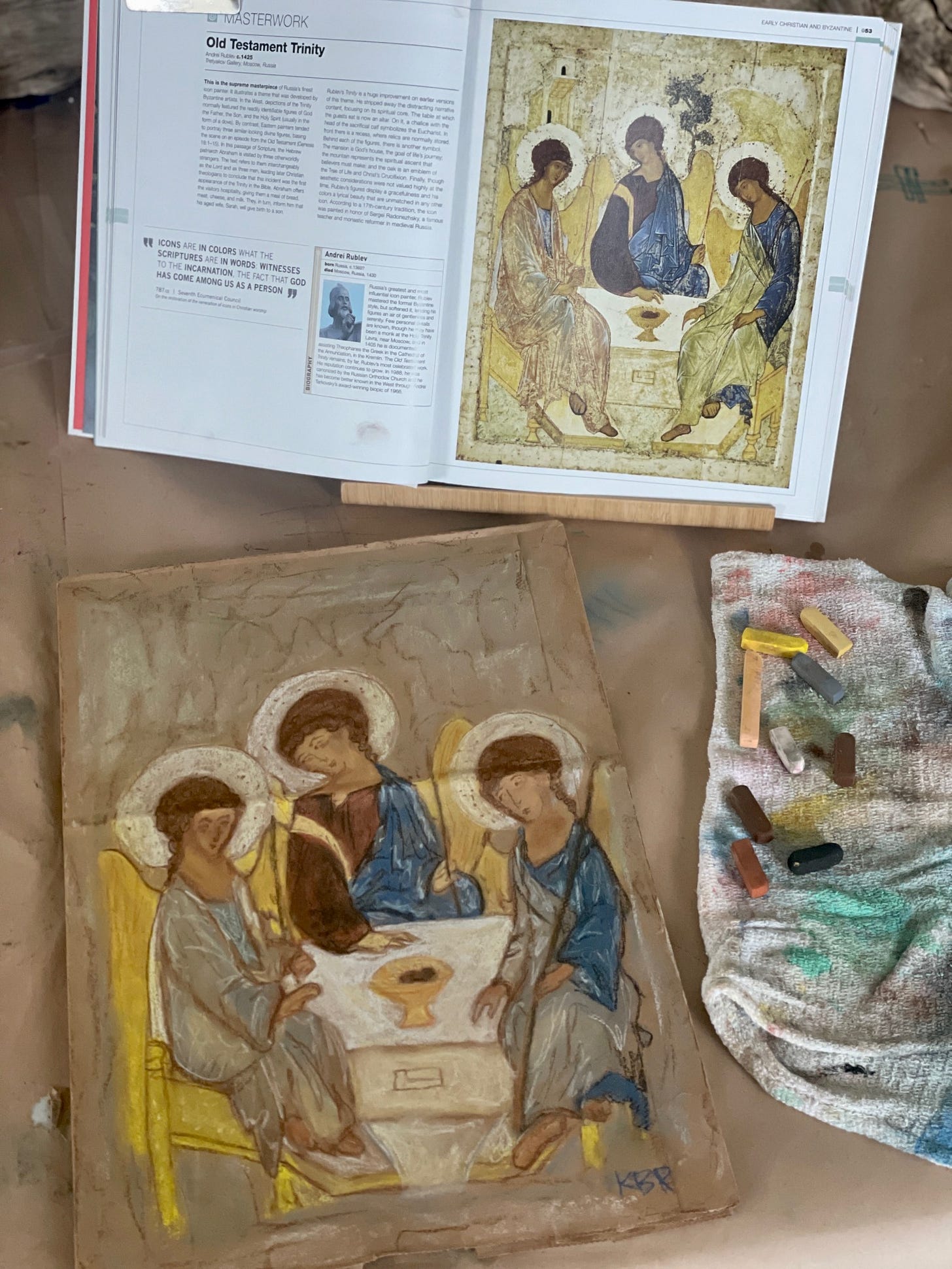
The blank canvas
A technique some artists use when beginning a new painting is marking up the blank, white canvas immediately. They’ll take their paintbrush and slash lines and color across the canvas, without any rhyme or reason, to simply put something down. This “ice breaker” move helps to eliminate that initial fear many of us feel when staring at a new canvas. It also helps the creative flow by building momentum; beginning with these lines, will lead to the next ones, which lead to the next, and so on.
Even with ideas swirling around in our heads, bursting to come alive on a canvas, that blank canvas can sometimes paralyze and that’s why these tactics are often employed.
Blank canvases – ‘his ways are higher than mine’
Recently, while meeting with our daughter’s therapist online in our weekly family therapy session, I confronted one of my fears by putting words to them: “I know I’m supposed to be hopeful that things will be different and better, but we’ve been through this, it’s been 6 years now, and it never gets better. How am I supposed to be hopeful and positive that anything will change this time around?”
The fact is, we’ve been down this road before and done this, 27 times to be exact. 27 times our daughter has been admitted into a treatment facility1, where she meets with therapeutic staff and psychologists, trained professionals whose job it is to work with her to help her and our family heal and thrive. That’s 27 new opportunities we thought God would have used to show our family He is the Great Redeemer; the All Powerful Deliverer of our sorrows; the One Who Makes All Things New. 27 blank canvases begging for some new picture to be painted.
And 27 times the painting didn’t turn out the way we’d hoped and we are stuck with a hot mess.
“OK, God, if you’re giving us a new blank canvas, why are you giving us a hot mess instead of a masterpiece? I don’t understand.”
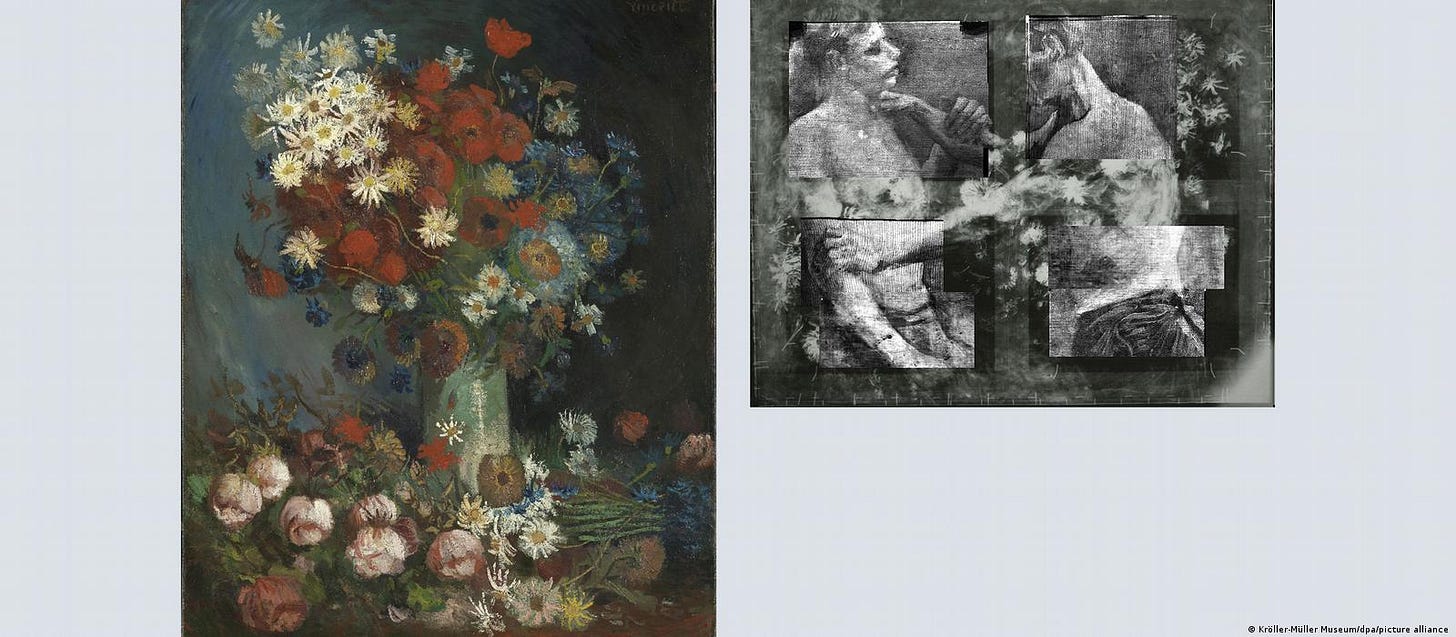
Paint overs – ‘there is purpose in the becoming’
I have a painting sitting on my easel in my art studio that’s been there for months. Before it was what it is now, it was something completely different. I painted white over the entire thing when I became frustrated with how it was turning out, in other words, this is what I do when I feel my painting is looking like a hot mess. The artist calls this a paint over.
Each layer of a painting on a canvas adds depth, texture, and interest and often paint overs ultimately have a very pleasing outcome despite the work and emotional turmoil2 that may have occurred in the process.

Each painting begins as a blank canvas. Emotions from the artist manifest through brush strokes. Brush strokes build and become layers, including paint over layers. Within those layers lie confidence and doubt, struggle and perseverance, work and play, heart and soul - it’s an investment the artist is willing to make for the sake of the ultimate masterpiece. Yet at every stage, it’s a work in progress. It’s becoming. And each stage is a necessary part of its becoming. The artist knows this is the work that must be done for a masterpiece to be made.
God is in the business of turning messes into masterpieces.
But we aren’t born masterpieces. We become them. We do the work it takes to become them. What appears as a mess in our life, like our paintings, is only a work in progress.
Wrestling with doubt – ‘it’s not about me’
After 6 years and 27 times our daughter has been away from us, going through treatment and getting therapy, my hope has waned. But as a Christ-follower, I should believe that my God can do anything. And I do; I really do. I believe in the miracles he’s performed and the hearts he has changed. I believe in the mountains he’s moved – I’ve even seen him do that in my life.
So, why is it so hard to sustain hope with this situation; how do I hold onto hope, year after year of things being left unchanged (or, in our case, worse than before), while waiting for God to move?
As I dig a little deeper, and with the help of a professional therapist, a bigger question is revealed:
How do I trust YOU, Lord, with MY painting?
You see, in my mind and heart, I know how I want my painting to look - a happy, healthy, thriving family; redemption and healing; And it’s not looking that way right now.
But it’s not my painting. I am merely the canvas. And the story the painting is telling…the mess, the beauty, the layers…it’s all about him. And for him. And by him. It’s all about a much bigger, more beautiful thing than one family’s journey. It was never my painting; it was always his. He is the one who holds the paintbrush as we become his masterpiece.
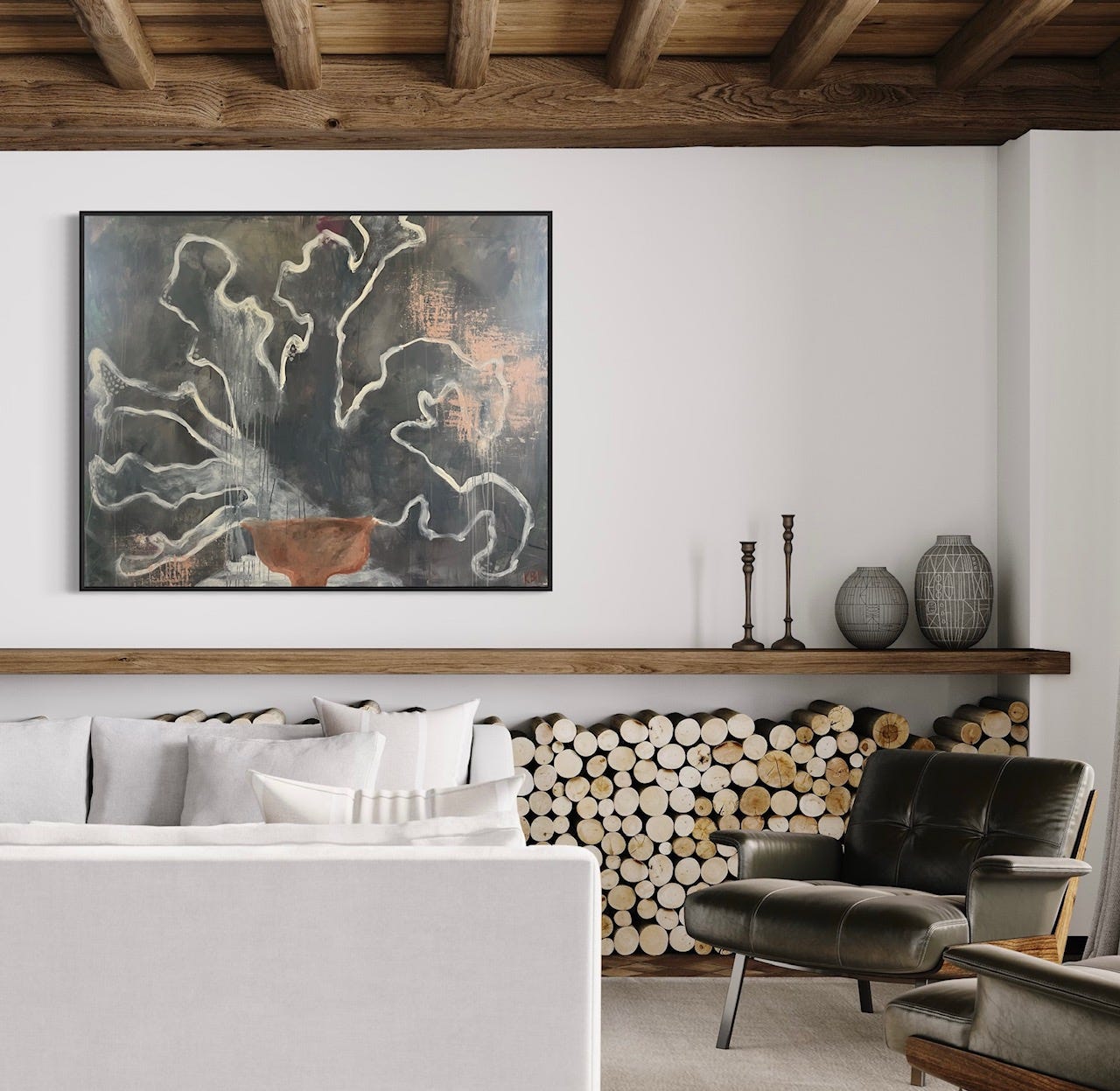
What to do in the becoming…
With each blank canvas or paint over, no matter if it’s the 1st, 27th, or 99th, as the brush strokes are laid down and it’s not looking the way we want it to, we can be reminded of these five truths:
I do not hold the paintbrush; God holds the paintbrush, and the ‘painting’ is not for my purpose, he created each one of us for His purpose. (Jeremiah 1:5; Psalm 139:13-16; Proverbs 16:4)
His ways are always higher than mine so when I can’t understand why he’s allowing such a mess, I can trust he’s at work in it. (Isaiah 55:8-9; Philippians 2:13)
Not only is this masterpiece of God’s good, but it was started by him and it will be completed by him. (Ephesians 2:10; ; Philippians 1:6)
As the artist, his love and what he intends to do is more than I could ever imagine, so every brush stroke on that canvas is not only made with purpose but also filled with grace and love. (Ephesians 3:18-20)
This painting, the one I am calling mine, is not about me. It’s all about him. YET, he is working all of this for our family’s good. (Galatians 2:30; Romans 8:28)
“If our lives are truly "hid with Christ in God," the astounding thing is that this hiddenness is revealed in all that we do and say and write. What we are is going to be visible in our art, no matter how secular (on the surface) the subject may be.”
― Madeleine L'Engle, Walking on Water: Reflections on Faith and Art
A creative project with a built in “ice breaker”
As trauma has changed the way I have been engaging in my creative process lately, and most of it, surprisingly, has been a welcomed change, I have enjoyed giving myself permission to play3. I’ve also only been interested in creative projects that feel good, with no stress. I’ve picked many things up and simply sat them down if and when frustration kicked in. In trauma healing, when everything else feels hard, I don’t need my art to.
I’ve been drawn to ‘painting’ with chalk pastels on used brown paper bags. With the paper being used or wrinkled, it immediately eliminates any need for my art to be taken too seriously or to be done perfectly. It has the built-in effect of beginning a canvas with mark making, as mentioned before, because these creases act as the ice-breaker. The chalk pastel, when used on its side, picks up the wrinkles and imperfections in the paper’s surface. Additionally, chalk pastels, being a messy medium, allow imprecision to have its place on the canvas. And smudging and blending this highly pigmented medium on the toothy paper bag is extremely satisfying. It’s a perfect example of emphasizing the creative process over the finished product4. So, overall this is a super fun, relaxing and therapeutic creative expression that feels perfectly imperfect.
I also adore the juxtaposition of using a fine art subject as inspiration on a wrinkled brown paper bag. I think it’s the duality5 (beautiful and plain) that gets me every time; I just can’t seem to escape it. Recently, I posted a piece I had worked on, Jesus Walks on Water, and shared our Mona Lisa’s that my boys and I made in homeschool, all on wrinkled brown ‘Wegmans’ paper bags. Yesterday, the boys and I spent a couple hours in the art studio with our wrinkled paper bags and I was inspired to make my version of Andrei Rublev’s, Old Testament Trinity, c. 14956.
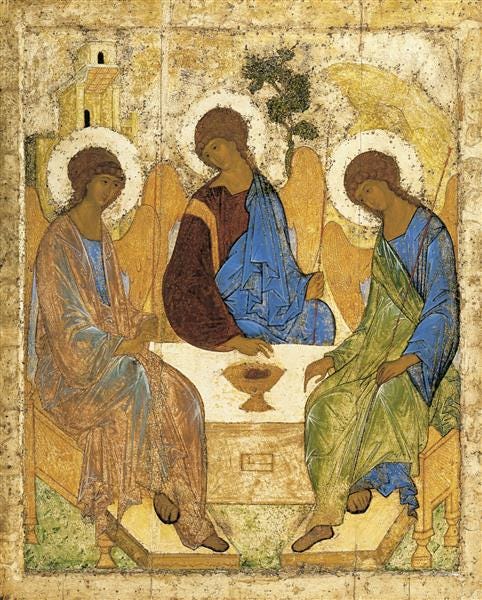
My youngest made a pretty awesome piece, too. It’s very Jean-Michel Basquiat to me. What do you think?
The chalk pastel and paper bag process
After I’ve set up my work space, I use the side of a chalk pastel to rub out the space I’ll use for my painting; in this case, a large rectangle just inside the border. I use a few more to add color (sticking with only lighter colors) and depth to this background and then blend them all together. It will change over time and it changes as I add the foreground subjects. As I mentioned above, this method will pick up the wrinkles and imperfections and I love that look.

Next, I take a darker pastel and make loose marks for the shapes I want to include. In this case, I loosely sketched the three bodies, wings and table with a brown.
Then, I start filling in the outlined subjects, using lighter colors first. For their body parts, I blended several colors together and for just a touch of shadow or darkness, like I needed around the face, I rub my finger across a chalk pastel (brown for the face shadows) and pat that color into the blending area and then blend it in. I gradually work up with darker colors, blending and mark-making along the way.
Lastly, I use white and black to highlight areas on the ‘canvas’. In this case, I did not finish the background as Rublev did; instead, I blended several colors to make a ‘loose’ background.
I have found with my chalk pastel paintings, that using a fixative (spray) changes the art, particularly on brown paper bags. I have also tried aerosol hairspray and didn’t like that look, either. I will not use a fixative on this one. Instead, I will just handle it carefully and frame it as is.
To view some beautiful chalk pastel drawings and paintings, check out this diverse and inspirational collection on display at the Metropolitan Museum of Art. Click here to learn more about chalk pastel techniques.
Tips for using chalk pastels:
Cover your workspace; they can get extremely messy
Wear an art smock/apron and have an old washcloth or rag nearby. I like for mine to be half wet, and half dry; wet to clean my fingers in between colors, and dry for a simple dry cleaning when a thorough cleaning is not necessary
Blow your work often so the dust doesn’t build up too much (but be mindful with your blows because this dust is messy and pigmented and can get on your carpets and flooring)
Have tissues or baby wipes on hand; you can often completely wipe off a mistake with a simple wipe/scratch of a tissue or baby wipe
Break the chalk pastels to get a sharp point to use for fine details
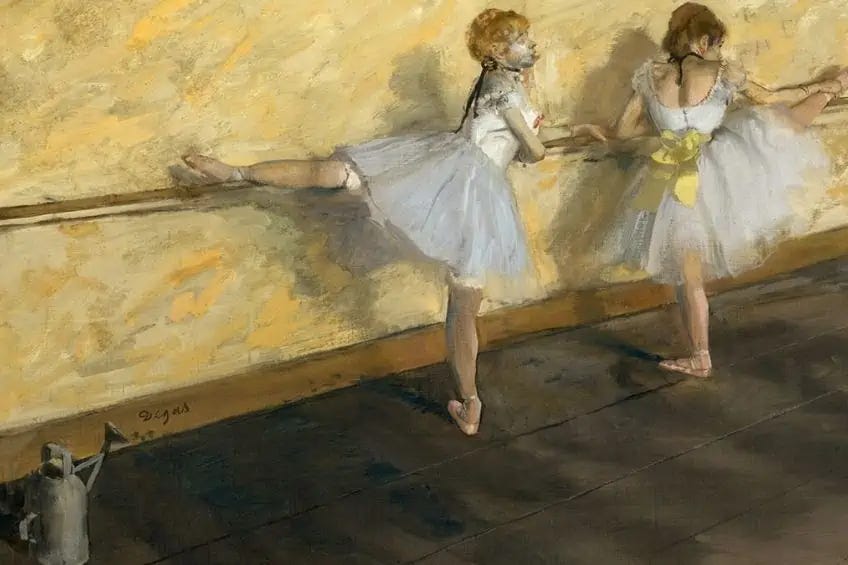
I describe an outline of our history in notes, but to summarize here, beginning with a very complicated and complex cocktail of medical diagnoses, brought to a head from living in a home with hidden, toxic mold, we were faced with many scary and often unsafe neuropsychiatric behaviors. Her treatment history includes extensive medical and mental health therapies, modalities and protocols.
My paint overs are usually met with a mix of emotions: first, there are the frustrations that I don’t like where my painting is going; then, I wrestle with the idea of painting over it, and feel anxious – should I, shouldn’t I? Once I begin painting over it, I grieve the old painting a bit, even when I hated it. Following grief is the doubt, maybe I shouldn’t have done that. Then, I feel a bit of relief as I wipe it clean/prepare myself a new blank canvas. There is hope now; it will be a new thing.
I’m a huge proponent of process vs. product when it comes to creativity. When I taught art and ran classes and workshops for children and adults, I focused entirely on the process over the end result. Process allows you to play; you are more mindful and engaged in the process because you are exploring and experimenting and making observations along the way. Process art welcomes wonder and awe. It’s extremely therapeutic and healing for stress, anxiety, mood disorders, trauma and PTSD recovery and so many other mental health challenges, in my opinion.




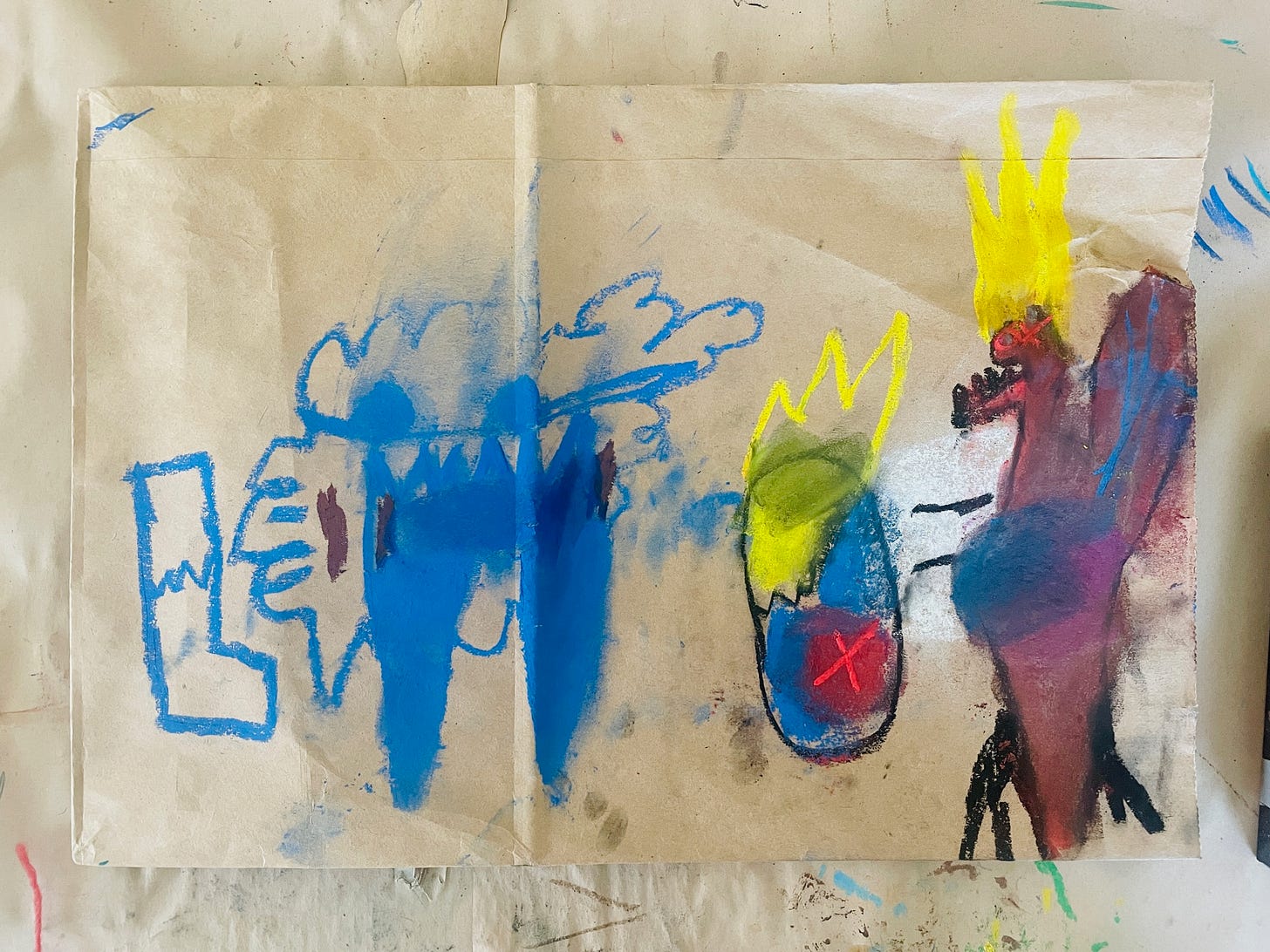
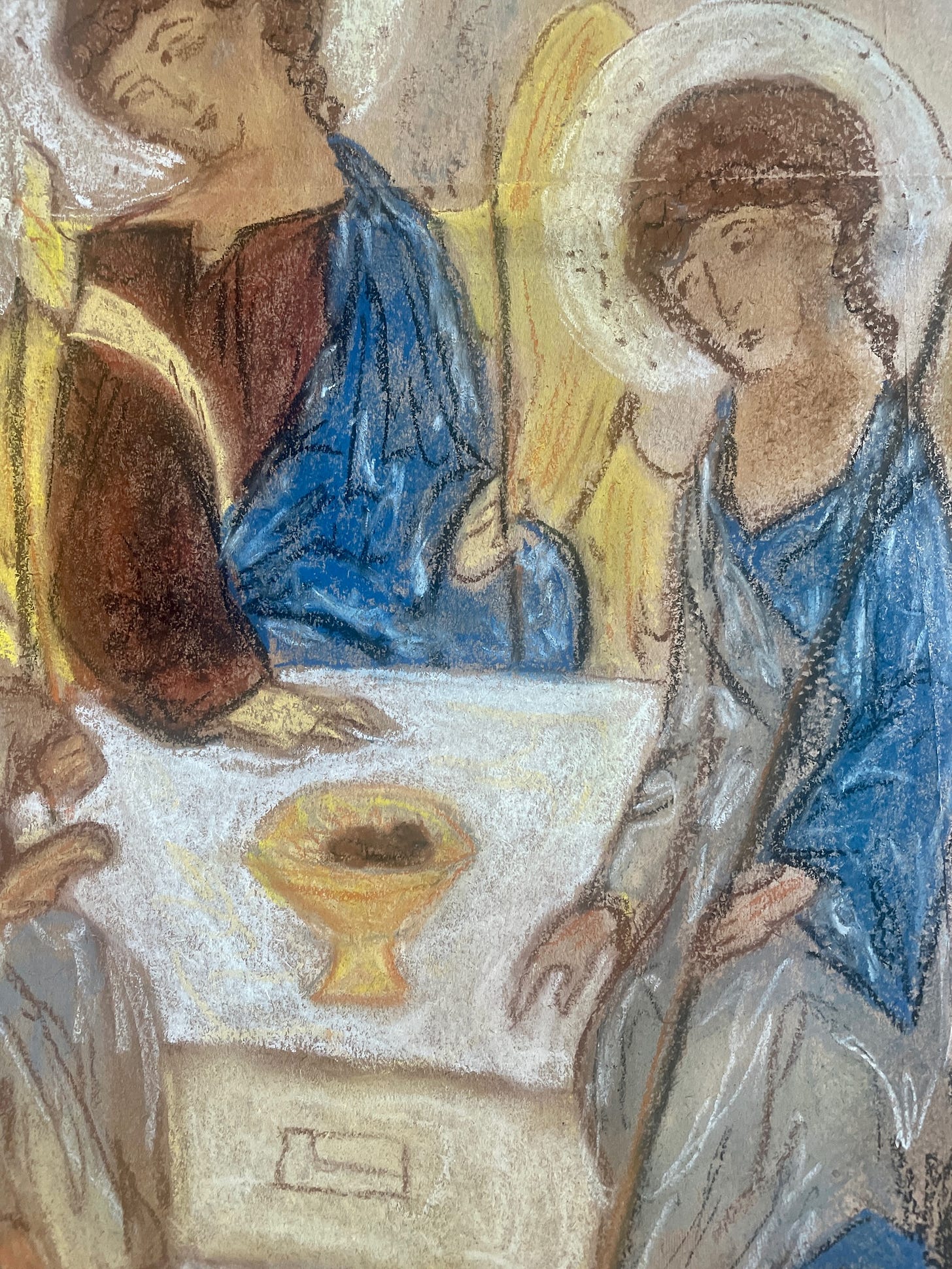
This is beautiful, Kelly. I’m praying for you this morning, for healing for your daughter and lasting hope in the waiting.
PS: of course, love and prayers for you and your whole family, and all you have been and are going through. 🙏🏻